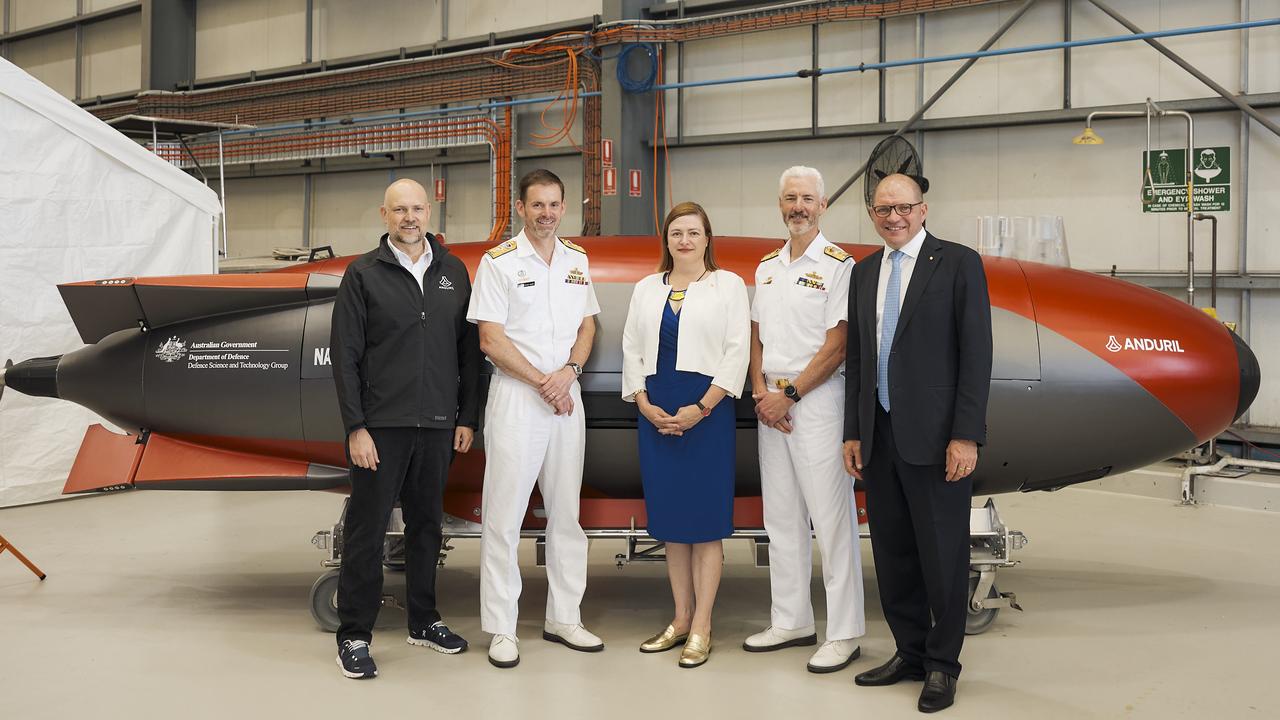In a 20 April 2023, an article by Gregor Ferguson in The Australian provided an overview of the Ghost Shark program.
In that article, the author highlighted the anticipated role of the XL-AUV or extra Large Autonomous Underwater Vehicle. “Make no mistake, (XL-AUVs) will be a game-changer,” said former Royal Australian Navy Head of Navy Capability Rear Admiral Peter Quinn when he officially named the XL-AUV the Ghost Shark last year.
“They will provide militaries with a persistent option for the delivery of underwater effects in high-risk environments, complementing our existing crewed ships and submarines as well as our future uncrewed surface vessels.
“The Ghost Shark program will create uncertainty in the minds of our potential adversaries and will deter both illegal and coercive behaviour,” he added.
“Due to their modular and multi-role nature, our adversaries will need to assume that their every move in the maritime domain is subject to our surveillance, and that every XL-AUV is capable of deploying a wide range of effects, including lethal ones.”
“Exact roles and performance targets are classified, but to achieve these goals, it will be modular, customisable and optimised with different payloads for different missions.”
I met with David Goodrich OAM, Executive Chairman and CEO of Anduril Australia and Asia Pacific at his office in Sydney on April 21 to get an update on the program.
The Ghost Shark program is a jointly funded and managed project with Defence Science and Technology Group (DSTG), the Royal Australian Navy (RAN) and Anduril Australia (Anduril). Anduril is contributing $70 million to the project and using technology from its Dive LD capability and Lattice artificial intelligence-powered operating system as starting points.
Anduril brought their Dive LD commercial AUV to Australia as a testbed vehicle to expedite development of the XL-AUV. The Dive-LD is a commercial product used for a variety of offshore missions for companies needing to do littoral and deep-water survey and inspections.
Anduril is developing the XL-AUV platform for both commercial and defence applications, with the Ghost Shark being the defence-specific platform with defence payloads defined by the RAN.
Three prototype XL-AUVs will be delivered to the Royal Australian Navy over three years. Each prototype will be iterative, using agile engineering approaches. As Goodrich describes the approach: “Each prototype will build upon and improve upon the previous one. By the time we have the third prototype in the water, it will be a deployable capability that can be manufactured at scale. This is the Anduril way.”
In fact, the Anduril team is already focusing on what is needed to deliver an at-scale manufacturing program to the Commonwealth. As Goodrich explains: “We are designing the Ghost Shark with the manufacturing process front of mind so that, at the end of the three year program, we can manufacture capability at scale. This is standard practice in the commercial world, but not so much in the traditional defence environment.”
He noted that China has successfully accelerated the build-up of their military by leveraging the commercial sector effectively. Liberal democracies need to shape their own variant of this strategy and embrace the innovation and agility available in the commercial sector. Clearly the Ghost Shark program is cut from this cloth.
The iterative design and upgrade process will be core to the program as it is implemented as well. Anduril is a ‘software first’ defence tech company that believes software-defined hardware-enabled defence capabilities can transform defence and restore competitive advantage. Goodrich underscored: “Because we’re not building crewed platforms, our engineering cycles can be a lot faster and more agile. Our objective is to get a minimum viable product into the hands of the defence customer as quickly as possible and have that customer shape the evolution of the product through actual use over a very short period of time.”
Not only does the defence customer need capabilities delivered more rapidly than through a traditional acquisition process, but rapid upgrades in conflict are key to mission success. As Goodrich warned: “In conflict, as we have seen in Ukraine, you can’t wait months for upgrades at high cost. You need to have a software-centric approach to retain the transient advantage in combat. Upgrades must be provided in days, not months and not at a cost of millions of dollars.
“Using a software first approach, we can push live updates of our software code to respond to adversary countermeasures in real-time. This refreshes our transient advantage on the battlefield. We can move faster than competitors and give our warfighters the capabilities they need to win. They deserve nothing less..”
Featured Photo: From left: Dr Shane Arnott, Anduril Australia’s Senior Vice President of Engineering and, effectively, chief designer of both the XL-AUV and the Boeing MQ-28A Ghost Bat; Rear Admiral Steve Hughes; Chief Defence Scientist Professor Tanya Monro AC; Rear Admiral Peter Quinn (retired); and David Goodrich OAM, Executive Chairman and CEO of Anduril Australia & Asia Pacific; stand in front of the Dive LD autonomous submarine which is much smaller but uses the same Lattice OS as the Ghost Shark and will be used by Defence for technology acceleration, testing and validation as it develops the Ghost Shark.
For an overview of defence autonomous systems and their development, see section five in the following book which we have just published:


